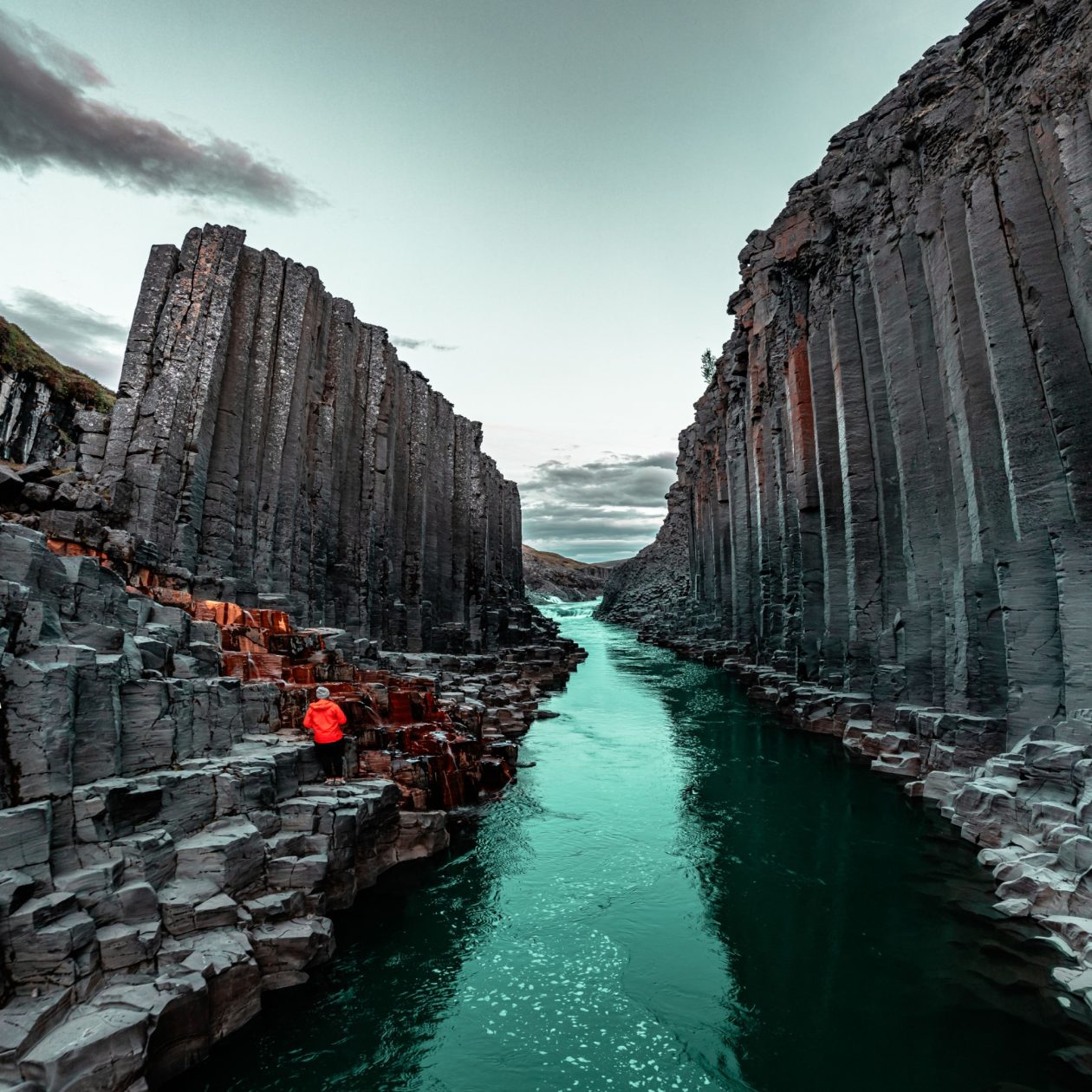Eastern Iceland
Studlagil Canyon
In the remote reaches of eastern Iceland, amidst the rugged landscapes that define this volcanic island, lies a natural wonder that, until recently, remained hidden from the world's collective gaze. Stuðlagil Canyon, with its striking basalt columns and ethereal turquoise waters, is a testament to Iceland's raw beauty and geological power. This remarkable canyon has quickly become a must-visit destination for those venturing into the eastern part of the country, offering a glimpse into the forces that have shaped the earth's surface.
The Geological Marvel of Stuðlagil Canyon
The journey to understanding Stuðlagil Canyon began millions of years ago with the volcanic activity that has characterized Iceland's formation. The canyon's most distinctive feature is its hexagonal basalt columns, formed from the cooling and solidification of lava. This process, known as columnar jointing, occurs when a thick lava flow cools, contracts, and fractures into remarkable geometric shapes. These basalt formations are not unique to Iceland but are among the most spectacular examples of this geological phenomenon.
Stuðlagil Canyon is carved by the Jökla River, a powerful force of nature that has shaped the canyon over millennia. The river's name, translating to "glacier river," hints at its origins, with glacial meltwater playing a significant role in its flow. The canyon's waters are a breathtaking shade of turquoise, a result of the finely ground rock, or glacial flour, carried by the river from the Vatnajökull glacier. This combination of basaltic architecture and vibrant waters makes Stuðlagil not just a canyon but a basalt masterpiece sculpted by nature's hand.
The Kárahnjúkar Dam: Unveiling the Canyon
The story of Stuðlagil Canyon's emergence into the public eye is intrinsically linked to the construction of the Kárahnjúkar Dam, one of Iceland's largest and most controversial infrastructure projects. Completed in 2009, the dam was primarily built to provide hydroelectric power for aluminum smelting operations. The damming of the Jökulsá á Dal River led to significant changes in the water flow through the canyon. Before the dam's construction, the powerful river flow concealed the canyon's basalt columns under a torrent of water. The reduction in flow rate post-dam revealed the stunning canyon, transforming it from a hidden gem into a natural wonder visible to all.
This transformation has brought Stuðlagil Canyon into the limelight, showcasing the delicate balance between human needs and the preservation of natural beauty. The story of the canyon post-Kárahnjúkar Dam serves as a poignant reminder of the impact of human intervention on nature and the unexpected discoveries that can arise from it.
A Journey to the Heart of Eastern Iceland
Located in the Jökuldalur Valley in eastern Iceland, Stuðlagil Canyon is approximately 50 kilometers from Egilsstaðir, the largest town in the east and the gateway to the region's natural wonders. The journey from Egilsstaðir to Stuðlagil is a scenic adventure through Iceland's diverse landscapes, encompassing rolling hills, vast plains, and the ever-present basalt formations that hint at the island's volcanic past.
Visitors to Stuðlagil can experience the canyon from multiple perspectives. The western bank offers a more accessible route for those wishing to get close to the water and touch the basalt columns, while the eastern side provides panoramic views perfect for photographing the canyon's majesty. No matter the path chosen, visitors are treated to a visual feast and a deep connection with nature.
The Lure of Stuðlagil and Environmental Considerations
As word of Stuðlagil Canyon's beauty spreads, it attracts visitors from across the globe, drawn to its unique geological features and the story of its revelation. The influx of tourists to this once-hidden canyon underscores the importance of sustainable travel practices. Visitors are encouraged to respect the delicate ecosystem, adhere to marked trails, and minimize their environmental footprint to preserve Stuðlagil's beauty for future generations.
Stuðlagil Canyon is a powerful example of the dynamic forces that have shaped Iceland's landscape. Its basalt columns stand as sentinels to the geological past, while the turquoise waters of the Jökla River weave through the canyon, a testament to the ongoing interplay between water and rock. The canyon's story, from its geological formation to the impact of the Kárahnjúkar Dam and its status as a natural wonder, reflects the broader narrative of Iceland — a land of fire and ice

